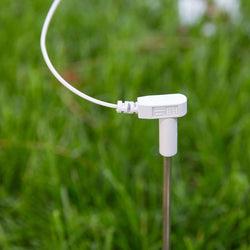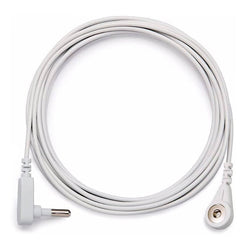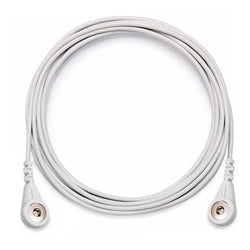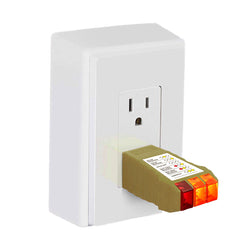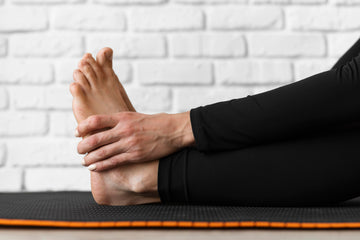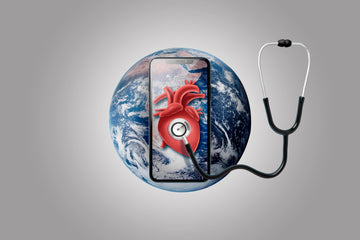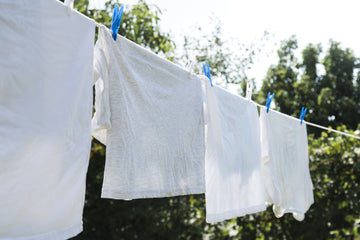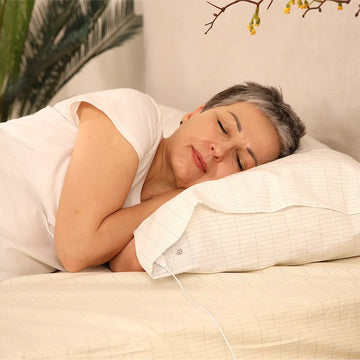Why Grounding Sheets Are Gaining Scientific Attention
In the realm of alternative and complementary medicine, few topics have stirred as much excitement as grounding or earthing. At its core, the concept is simple: making direct contact with the Earth's surface electrons to influence the human body in measurable and beneficial ways. This idea has given rise to an array of products, including grounding sheets and grounding mats, aimed at helping us reconnect with the Earth's energy from the comfort of our homes.
Grounding sheets science is no longer just anecdotal or spiritual. A growing body of scientific evidence, clinical research, and physiological studies are backing the effects of grounding, especially for improved sleep, stress reduction, and even immune system modulation. In this article, we’ll explore what grounding sheets are, how they work, the underlying biology, and why they could be a universal anti-inflammatory remedy in the modern world.
Interest in this field continues to rise as more of us seek natural, side-effect-free ways to enhance our well-being. Grounding is not just a wellness trend—it's a return to something our ancestors experienced daily, and science is now catching up to explain the profound effects of reconnecting with the Earth.
We at Earthing Harmony have a wide selection of grounding products to get you started on this exciting and effective healthy path, did you already choose which is your favourite?
What Are Grounding Sheets?

Grounding sheets are bedding products woven with conductive material—typically silver or carbon fibers—designed to connect your body to the Earth while you sleep. When connected to a grounded outlet using a grounding wire or grounding port, these sheets allow for the flow of electrons from the Earth's surface into the human body. This process mimics the effects of walking barefoot outside, facilitating what researchers believe are natural healing interactions.
These sheets often come in the form of fitted grounding sheets or pads, depending on user preference and bed type. By maintaining direct contact with the skin, they establish a stable electrical connection between the body and Earth.
For us living in urban environments with limited access to natural ground surfaces, grounding sheets offer a convenient and consistent way to practice grounding. They are especially valuable for those of us with chronic conditions who need nightly recovery and immune support through uninterrupted contact with the Earth's energy.
The Science Behind Grounding the Human Body
To understand how grounding sheets work, it’s essential to delve into the biological and electrical nature of the human body. Our bodies are bioelectrical systems. Every heartbeat, muscle contraction, and brain signal depends on electrical activity. When the body becomes disconnected from the Earth—especially in our modern environments filled with synthetic soles and high-rises—it can result in imbalances and even stress at a cellular level.
Direct physical contact with the Earth allows the absorption of free electrons. But what can electrons then do? These earth’s surface electrons act as natural antioxidants, helping to neutralize free radicals, which are unstable molecules involved in inflammation and chronic disease. This is where the grounding sheets come into play. They re-establish this lost connection indoors, particularly during long hours of sleep.
This bioelectrical connection influences the autonomic nervous system and has been shown to reduce markers of chronic inflammation. It represents a unique intersection of biology and physics that makes grounding both fascinating and functionally relevant in today's health landscape.
Conductive Materials: The Key to Electrical Connection

The magic of grounding sheets lies in their conductive material. Silver, a superb conductor, is commonly woven into the cotton or bamboo fabric of grounding sheets. This conductive layer is linked via a grounding wire to the electrical outlet or grounding port, which in turn is connected to the Earth’s surface. Note that only the grounding hole of the outlet is used—no electrical current flows through the sheet. There’s absolutely no risk of electric shock!
This setup enables direct skin contact to transfer electrons into the body. Such a passive transfer is safe, effective, and supported by mounting evidence in inflammation research and sleep science.
The combination of soft, breathable materials and high-conductivity fibers allows for comfort, without compromising functionality. High-quality sheets maintain conductivity over many washes and are built to last, ensuring you continue to receive benefits night after night.
Grounding Techniques and Tools: Beyond Walking Barefoot

Traditionally, grounding involved walking barefoot on natural surfaces like grass, soil, or sand. While this remains one of the most effective grounding techniques, modern lifestyles often make it difficult to spend significant time outdoors. Enter grounding sheets, grounding mats, grounding patches, and mattress pads—all designed to mimic that same effect through physical contact with conductive surfaces.
Some tools plug into an electrical outlet while others use a grounding rod driven into the earth. Regardless of the method, the goal remains consistent: to reduce the harmful effects of chronic inflammation and improve sleep and our general physiological balance.
Each tool has unique advantages. Mats are ideal for use under a desk, shoes can be worn indoors and outdoors alike, and sheets offer overnight benefits. Having access to multiple options allows you to stay grounded no matter where you are—in bed, at work, or even while traveling.
Physiological Effects of Grounding: What the Studies Say
The physiological effects of grounding are vast and growing in scientific validation. Among the most well-documented changes are improvements in blood flow and reduced blood viscosity. Studies published in journals like The Journal of Alternative and Complementary Medicine report that grounding can lead to normalized cortisol levels, a reduction in stress levels, and even lowered blood pressure.
One such study revealed that subjects who slept on grounding sheets showed significantly improved sleep and reduced pain compared to those using regular bedding. This aligns with subjective reporting from thousands of users claiming better sleep, reduced pain, and enhanced well-being.

These changes are not just theoretical—they have tangible impacts on daily life. Better circulation, lower stress, and improved sleep quality all translate into higher energy levels, improved mood, and reduced risk of chronic illness over time.
Impact on Immune Response and Inflammatory Diseases
Another critical area where grounding sheets work is immune function. Chronic inflammatory and autoimmune diseases have become a major factor in global health implications, with rising cases linked to environmental stress and sedentary lifestyles.
Grounding or earthing can help modulate immune response by reducing the activity of white blood cells that are unnecessarily triggered in autoimmune conditions. Researchers from the Earthing Institute suggest that the flow of electrons into the body dampens the inflammatory response, reducing pain and swelling while promoting healing.
This natural approach to immune regulation offers hope for us managing long-term inflammatory conditions. It supports the idea that our external environment can deeply influence internal immune activity in ways that are only beginning to be fully understood.
Read more on grounding effects on inflammation in our blog article Grounding for Inflammation: A Science-Backed Guide to Natural Healing.
Grounding and Emotional Stress: The Cortisol Connection
One of the most profound health benefits of grounding is its ability to reduce stress. The connection lies in cortisol, the body's main stress hormone. Chronic emotional stress leads to elevated cortisol levels, which disrupt sleep, impair immune function, and accelerate aging.
Grounding has been shown to normalize cortisol patterns, especially when using grounding sheets overnight. This is thought to enhance the body’s parasympathetic (rest and digest) response, part of the autonomic nervous system, which governs relaxation and recovery.
By promoting this calming nervous system response, grounding may offer an effective, drug-free method for managing stress-related symptoms such as anxiety, irritability, and mental fatigue. Over time, users often report a more balanced emotional state and greater resilience to daily stressors.
You can read more on how grounding reduces anxiety here.
Effects of Grounding on Sleep Quality and Circadian Rhythm
Improved sleep is one of the earliest reported benefits of grounding sheets. Whether it’s better sleep onset, deeper REM cycles, or fewer night-time awakenings, grounding appears to recalibrate the body’s internal clock, or circadian rhythm.
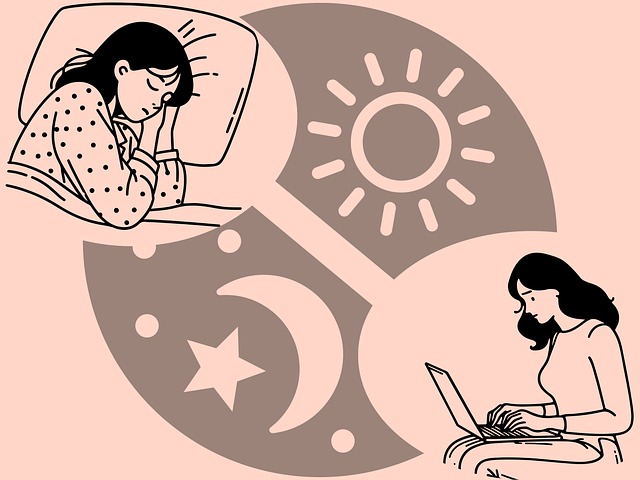
This restoration is likely due to reduced cortisol levels, lower inflammation, and enhanced connection to the Earth’s natural frequencies. When grounded consistently, the body shifts from a state of chronic fight-or-flight to one of equilibrium and repair.
These improvements have broader implications for cognitive function, hormonal balance, and metabolic health. Restorative sleep supports all aspects of human health, making grounding a vital addition to any sleep routine.
Grounding the Human Body for Muscle Recovery and Soreness
For athletes and fitness enthusiasts, grounding offers a natural edge in muscle recovery. Grounding sheets and grounding mats have been used post-workout to reduce delayed onset muscle soreness (DOMS) and promote quicker recovery. The mechanism is believed to involve reduced inflammation and enhanced blood flow, aiding the delivery of oxygen and nutrients to muscle tissue.
Solid research shows that grounded individuals recover faster from physical exertion and exhibit fewer biomarkers of tissue damage.
This benefit isn’t limited to athletes—anyone recovering from physical exertion, injury, or surgery may experience accelerated healing. Incorporating grounding into post-activity routines can enhance your overall physical resilience and reduce recovery time.
Applications for Chronic Inflammatory and Autoimmune Diseases
Grounding holds promise in the treatment of chronic inflammatory and autoimmune diseases. Conditions such as rheumatoid arthritis, lupus, and fibromyalgia often involve an overactive immune system attacking the body’s own tissues. Grounding the human body through sheets or mats may help to calm this response.
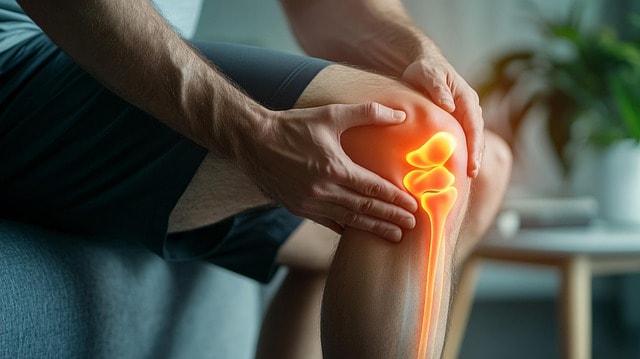
The molecules involved in inflammation—like cytokines—are thought to be influenced by earth’s surface electrons, reducing their activity and contributing to long-term symptom relief. These effects are backed by early clinical trials and numerous case studies.
By consistently using grounding sheets, those of us with chronic inflammatory and autoimmune conditions may experience fewer flare-ups, reduced pain, and a better quality of life over time.
The Role of Subjective Reporting in Grounding Research
While double-blind randomized controlled trials are the gold standard in scientific research, grounding studies often rely on subjective reporting from users. This doesn’t diminish their value—thousands of individuals have reported reduced stress, improved sleep, and better overall health through self-assessments, sleep diaries, and user surveys.
This type of feedback is crucial in alternative and complementary medicine, helping to guide further research and refine grounding practices.
Anecdotal evidence, when gathered at scale, reveals patterns that merit further investigation and validate user experiences. Many breakthroughs in wellness have been driven by first hand observations before gaining formal scientific approval!
Environmental and Public Health Considerations
On a broader scale, grounding intersects with environmental and public health. Modern disconnection from nature has been linked to a rise in chronic diseases, emotional stress, and immune dysfunction. Reintroducing even simple grounding practices—like walking barefoot or using a grounding bed sheet—could have meaningful impacts on community well-being.
As a non-invasive, low-cost, and universally accessible tool, grounding supports the call for more nature-based interventions in healthcare.
When integrated into public health strategies, grounding may reduce the burden on healthcare systems by addressing root causes of inflammation, stress, and sleep disorders at the population level.
Grounding Sheets Work: Fact or Fiction?

So, do grounding sheets work? According to mounting evidence and user reports, the answer leans heavily toward YES. From improved sleep and muscle recovery to reduced inflammation and immune support, grounding sheets deliver tangible health benefits for many.
Scientific evidence from institutions like the Earthing Institute and independent researchers continues to validate the biologic effects of grounding on the human body.
While results can vary from person to person, the consistent positive effects observed across diverse groups suggest that grounding sheets offer much more than placebo. Their simplicity and growing scientific support make them a promising wellness tool.
Best Practices for Using Grounding Sheets Safely
Using grounding sheets is simple, but proper installation is essential. Always plug the grounding wire into the grounding port or electrical outlet's ground hole only—not the live slots. Confirm the outlet is grounded using a tester before use.
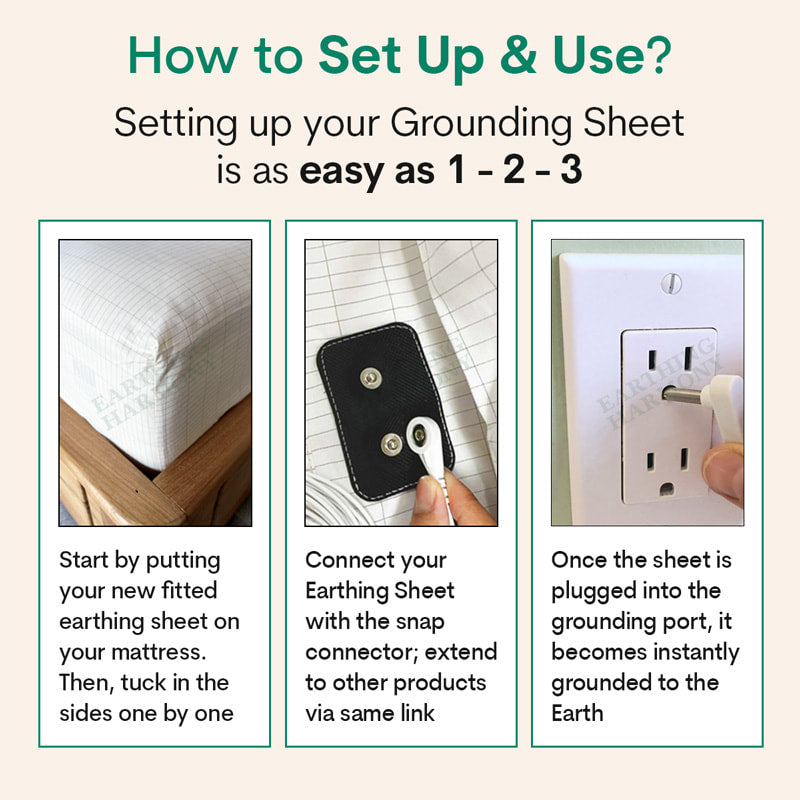
Ensure that the sheet makes direct skin contact throughout the night. Avoid layering thick materials between your body and the sheet. Wash grounding sheets regularly with gentle detergent and avoid fabric softeners, which can interfere with conductivity.
Following these guidelines not only maximizes the effectiveness of the sheets but also ensures your safety. A small investment in proper setup pays dividends in health outcomes and peace of mind.

From Walking Barefoot to Sleeping Grounded: A Lifestyle Choice
Incorporating grounding into your life doesn’t stop at night. Walking barefoot on natural surfaces, resting on grounding mats during the day, for example whilst working, are all effective ways to extend the healing effects of Earth’s energy.
These lifestyle changes are simple yet profound, offering support in managing chronic inflammation, autoimmune diseases, and emotional stress, just to begin with.
Making grounding part of your daily routine creates a continuous connection to the Earth's natural energy. Over time, this ongoing interaction may help stabilize mood, strengthen the immune system, and promote long-term well-being.
Grounding as a Path to Better Health and Balance
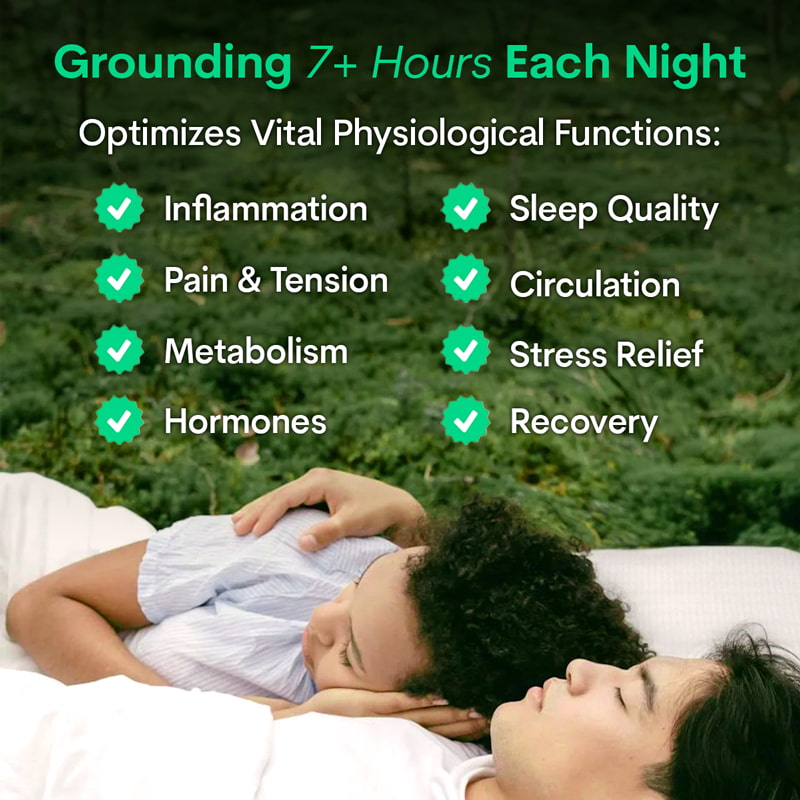
In our fast-paced, digitally driven world, grounding provides an anchor to something fundamental: the Earth itself. Grounding sheets bring that connection indoors, allowing your body to tap into earth’s energy during the most healing part of the day—sleep.
From stress reduction and cortisol regulation to muscle recovery and immune enhancement, the grounding sheets science is compelling. While more solid research is still needed to fully understand all the effects of grounding, the mounting evidence suggests this simple practice may hold the key to modern well-being.
Grounding or earthing is not a cure-all, but it is a powerful complementary tool. With rising awareness and growing accessibility, grounding sheets are poised to become a staple in natural wellness routines across the globe.
In embracing grounding as a regular habit, we reconnect with nature in a deeply personal and biological way. The simplicity of this practice, paired with its potential benefits, makes it an accessible and valuable path toward holistic health.

Frequently Asked Questions About Grounding Sheets
1. Is there any science behind grounding sheets?
Yes, there is a growing body of scientific research that supports the potential benefits of grounding sheets, particularly in areas such as sleep improvement, stress reduction, and wound healing. Clinical studies have shown that when the human body is grounded—either by walking barefoot on natural surfaces or by using grounding products like sheets connected via a conductive plug—it can absorb free electrons from the Earth's surface. These electrons act as powerful antioxidants, neutralizing free radicals and reducing inflammation.

Research also indicates that grounding can positively influence the autonomic nervous system and cortisol rhythms, contributing to a better night’s sleep and improved immune function. Some studies have even found that grounding may help reduce blood viscosity, enhance circulation, and speed wound healing, all of which are critical in managing chronic illnesses and improving recovery outcomes.
While more large-scale research is needed to solidify these findings, the mounting scientific interest and early results suggest grounding sheets may offer much much more than just placebo effects.
2. Are grounding sheets legitimate?
Grounding sheets are considered a legitimate wellness tool by many in the fields of integrative and complementary medicine. They are built on the same principle as grounding (or earthing) outdoors: maintaining electrical balance between the human body and the Earth. This is typically achieved using grounding sheets that contain conductive materials—often silver or carbon fibers—woven into fabric that connects to the Earth via a grounding port or rod.
When used properly, grounding sheets provide a continuous electrical connection between the body and Earth, much like standing barefoot on soil or grass. This connection enables free electrons to flow into the body and may help modulate inflammatory and stress responses, according to peer-reviewed studies.
Institutions like the Earthing Institute have documented numerous cases and preliminary trials supporting grounding's impact on sleep, energy, pain relief, and even thyroid hormone levels. As a result, many practitioners and users view grounding sheets as a legitimate component of a holistic health regimen.

3. Are there any negative effects of grounding sheets?
For most people, grounding sheets are completely safe and well-tolerated. However, like any wellness product, individual experiences may vary. Some first-time users report temporary sensations such as tingling or slight discomfort, which may be attributed to the body adjusting to the new electrical balance. These feelings typically subside after a few uses.
It’s also important to ensure proper use. Grounding sheets should always be connected via a properly grounded outlet or grounding rod using a conductive plug. If the outlet is not grounded or if the product is used incorrectly, it could compromise the grounding experience or create electrical issues.
While no direct link has been established, we always recommend individuals with implanted electrical devices such as pacemakers to consult their doctor before using grounding products, to tailor grounding practices into their personal circumstances.
4. Do grounding sheets use a lot of electricity?
No, grounding sheets do not use any electricity in the way that traditional appliances or electronic devices do. When plugged into a wall outlet, they connect only to the grounding portion of the socket—not to the live or neutral wires. This connection allows electrons from the Earth to travel into the sheet and reach the body, but no electrical current flows through the sheet. The goal is to replicate the effect of touching the Earth with bare feet, not to power a device.
Because the grounding connection simply facilitates the natural flow of electrons and doesn't require energy input, grounding sheets have no measurable effect on your electricity bill. In fact, the process is passive—much like attaching a metal rod to the earth—and can be maintained 24/7 without consuming any power.
In short, grounding sheets offer the benefits of direct Earth contact without the environmental or financial cost of added electricity use. They are energy-efficient, safe, and designed to support natural biological processes, including inflammation reduction and cardiovascular disease prevention.

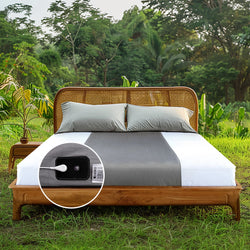




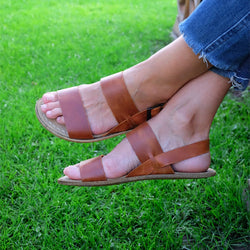
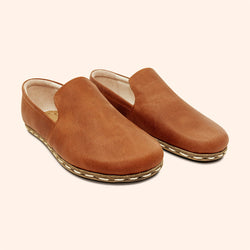 Shoes
Shoes
 Boots
Boots
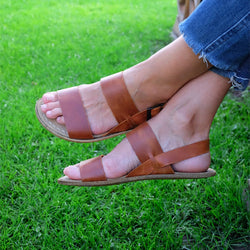 Sandals
Sandals
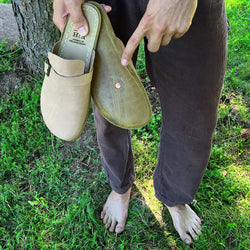
 Shoes
Shoes
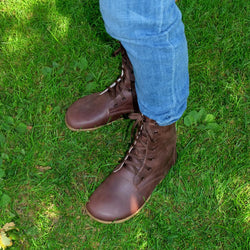 Boots
Boots
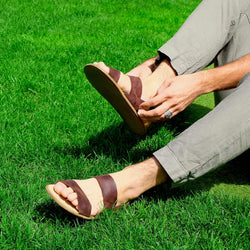 Sandals
Sandals




